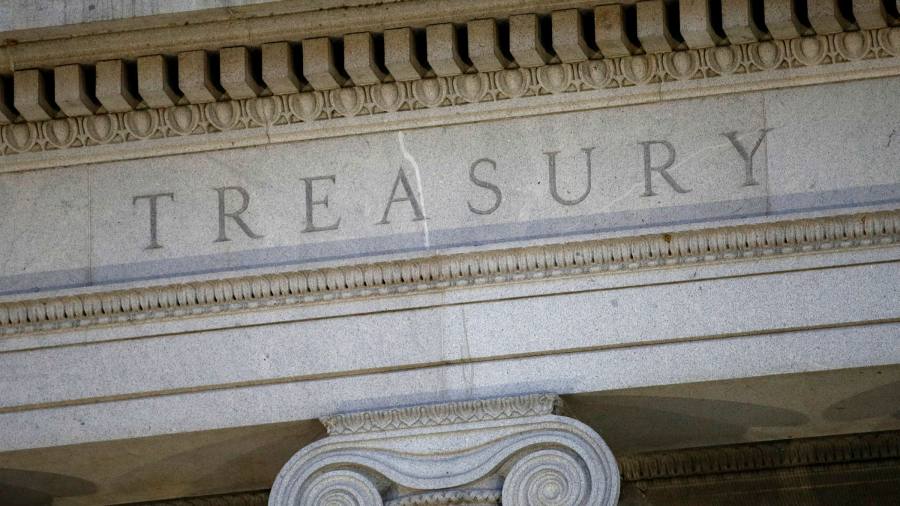Some time before the end of this year, at the intersection of Wall Street and the Washington Marsh, an agreement will need to be made on how the US government finances itself.
In the mix, there will be a push for reforms to ensure that a rapidly growing pile of public debt can be traded without overwhelming the financial system.
Each side wants something. The Biden administration wants to improve the way the big banks and dealers interact with the Treasury, the Federal Reserve, their customers, and each other to keep the government’s debt machine running. Banks want regulatory relief for their trading operations.
The sine qua non of a deal on Treasury market reform, raising (or, who knows, perhaps abolishing) the debt ceiling, will be negotiated between Senate and House Republicans and their Democratic counterparts. , together with the White House. It will be a tense but familiar struggle, and can certainly only be resolved at the last minute, possibly in October and November.
In parallel, there will be negotiations on reforms of the secondary Treasury debt market. This market has been strained since the pandemic.
The major concessionary banks have post-crisis regulatory limits and fees that effectively limit or overstate their ability to mediate in the US treasury bill market. Additionally, a major bank, Wells Fargo, has been barred from increasing its asset base following its fake accounts scandal.
“If the American financial system was a Boeing 747 going through a fiscal storm, it flew with three engines (JPMorgan, Citibank and Bank of America), and the fourth engine – Wells Fargo – was offline,†says Zoltan Pozsar of Credit Suisse .
The Treasury market will also, prospectively, lose some balance sheet capacity from dealers as new reporting rules come into effect for European banks, supposedly by 2023, but in practice next year.
The Biden administration and the Congressional Democrats don’t want to do the banks a favor, but it’s absolutely essential for their programs that there is a well-functioning, highly liquid treasury market.
It will take the magic or the Swiss army knife of the banking reformers: the central clearing party, or CCP.
A CCP is a public service in the financial market, usually owned or owned by participating members, which acts as a buyer for all sellers and as a seller for all buyers. It transforms the counterparty risk that arises when one institution enters into a transaction with another into a more credible and visible risk of the CCP, with all its capital, the support of its members and the implicit or explicit support of the government.
The CCPs have been around for a long time, but they have recently gained prominence in American political dialogue after the financial crisis. At the time, it was noted that “two-way” bank-to-bank trading had incurred more systemic risk than markets such as those operated by commodity exchanges like the CME or the Intercontinental Exchange, which used central counterparties as risk intermediaries.
The post-crisis Dodd-Frank law and accompanying regulations strongly encouraged financial derivative markets to shift from bilateral trading to CCP-based trading. There has been strong resistance, however, to moving the Treasury market to a CCP.
Among the most tenacious supporters of a Treasury CPC is Darrell Duffie of Stanford University. His papers on the subject are cited by the most influential executives of the Fed and the Biden Treasury.
I include Nellie Liang, who is on the right track to be approved by the Senate to be the Under Secretary of the Treasury, and, indeed, the Patron of Treasury Markets, along with his Fed counterparts, including Lorie Logan, System Open Market account manager, and Lael Brainard, vice-president.
However, the CCP skeptics are well connected and influential. They include Manmohan singh of the IMF, which wrote that the imposition of a treasury CCP would “further squeeze the world’s most important market into institutions already too big to fail, ultimately taxable to the taxpayer.” Singh added: “This would require further consideration from the Fed and possibly securing new lines of liquidity.”
I believe that after some arguments the banks will agree this year to work on a plan to move the treasury market to a CCP platform. During the multi-year planning process, major brokers will benefit from temporary regulatory relief from balance sheet limits and fees on current treasury trading activities.
CCPs are in fact a cyclically recurring structure. They work well in medium-sized seizures and are dropped when struck by large seizures. History will repeat itself.

